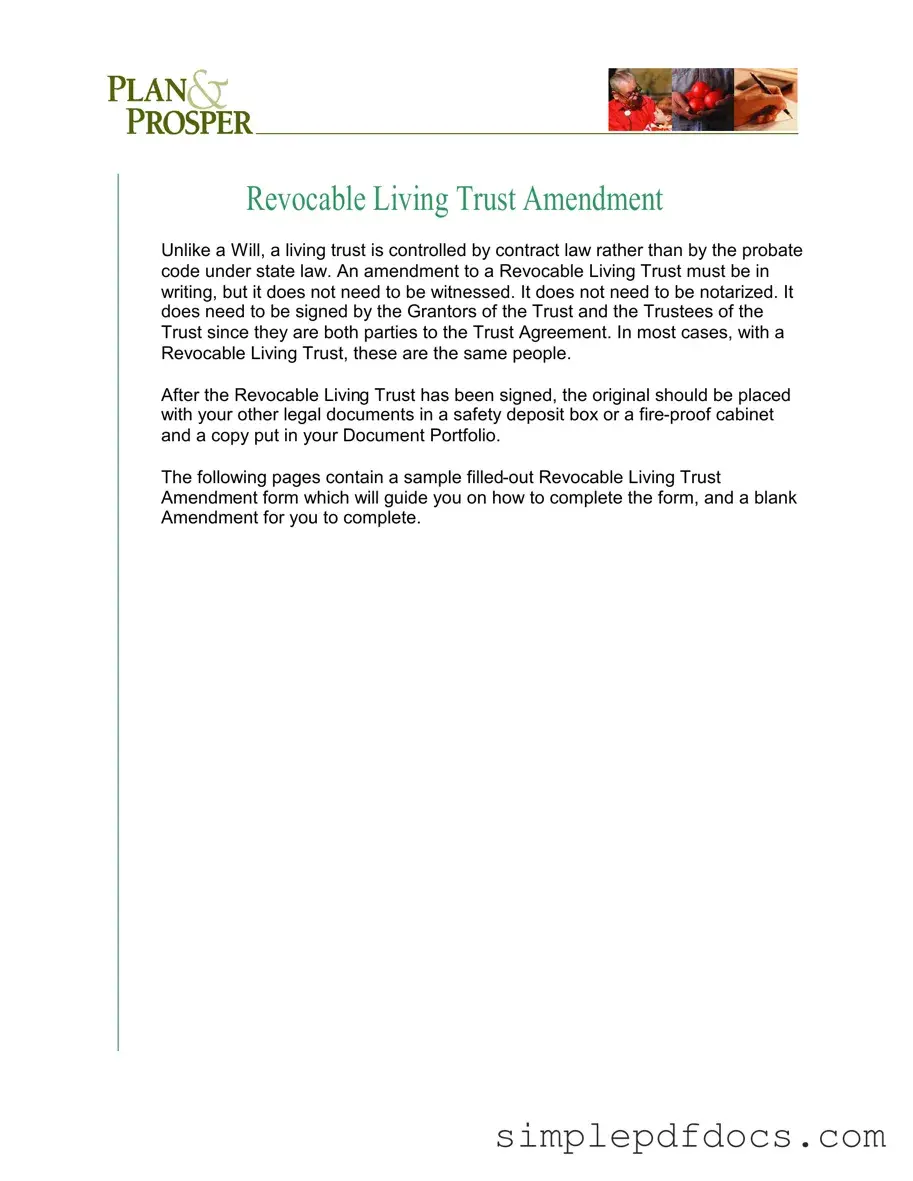The Trust Amendment form plays a crucial role in the management of a Revocable Living Trust, allowing for necessary changes to be made as circumstances evolve. Unlike a Will, which is governed by probate laws, a living trust operates under contract law, providing flexibility and ease in making adjustments. This form must be completed in writing, ensuring clarity and intent, but it does not require witnesses or notarization, simplifying the amendment process. It is essential that both the Grantors and Trustees sign the amendment, as they are integral parties to the Trust Agreement. Typically, these roles are filled by the same individuals, streamlining the process even further. Once the amendment is finalized, it should be securely stored alongside other important legal documents, such as in a safety deposit box or a fire-proof cabinet, while a copy is kept in your Document Portfolio for easy access. The following sections will provide a sample of a filled-out Revocable Living Trust Amendment form and a blank version for your convenience, guiding you through the process of making your own amendments with confidence.
